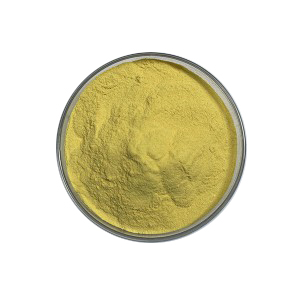The principle of deplating of Resist salt S and its influence are studied, and fenton oxygen/chemical method is adopted to deal with the deplating waste containing Resist S. The results show that the method can remove 70% chroma.
Resist S is // nitrate //ji// Ben //.. As an intermediate of dyes, sulfur // acid // sodium is commonly used as dye prevention agent and orange protective agent, and widely used as electroplating nickel remover. Resist S can dissolve the coating, but does not corrode the substrate, and has a protective effect on the substrate. Its preparation process is roughly as follows:
C6H6 -- HNO3.H2SO4 mixed nitration -- nitrate. Base Ben -- trioxygen. Sulphurization. Sulfonation -- salt for prevention.
1. Principle of deplating anti-dye salt S by electroplating
In the electroplating industry, especially in the enterprises of metal plating, anti-dye salt S is mainly used for nickel, gold and other plating, but also widely used in the pre-electroplating process.
At present, the main deplating process: mixed nitrate. Acid method, electrolysis method, anti - dye salt S method. Among them, the difference between QING and non-Qing deplating processes in anti-dye salt S method is whether NaCN is used as the complexing agent. Therefore, anti-dye salt S is still the effective component of all kinds of nickel removing agents on the market at present.
1, deplating agent ingredients
2, the influence of electroplating anti-dyeing salt S
The color of the deplating solution is similar to that of the high-concentration chromium-containing waste water, and the deplating solution contains a high concentration of QING, which is easy to be mistakenly discharged into the chromium-containing waste water. Water, resulting in. Director /.. so.
Since the color caused by Resist S is extremely difficult to remove, it cannot be removed by chemical pretreatment of electroplating wastewater such as ordinary chlorine and oxygen method, resulting in serious yellow color of the effluent, which affects the discharge of water and increases the burden of the membrane treatment system for medium water reuse. The resulting light yellow becomes lighter in acidic conditions, darker in neutral and alkaline conditions, and darker in color from yellow to red after light exposure.
3. Treatment of waste >/ water containing anti-dye salt
The water should be collected separately and treated separately. At present, there are not many effective methods for treating the water, such as ordinary oxygen/chlorination. Sodium acid, oxygen, etc. can not open the nitrate. Ben rings in base Ben and Benamine. Activated carbon adsorption and flocculant precipitation methods can not remove nitrate. Base Ben and benamine, but with sulfur. Ferrous acid can mask part of the color, but there will be color phenomenon, if the water is not large, it can be diluted with the discharge water after discharge.
Fenton oxidation process was used to treat the waste./ water, and the color removal effect of H2O2 was studied. The whole process is divided into two stages: pretreatment and Fenton oxygenation.

3.1 Properties of deplating solution
3.2 pretreatment
As deplating waste /. Water contains a high concentration of QING, it needs to be pretreated. The whole process is divided into two stages:
1) The QING was broken by oxygen chloride method.
2) PAC, PAM flocculation precipitation.
3.3 Fenton oxidation
The results show that the Fenton oxidation method can remove about 70% of chroma, and various improved Fenton oxidation methods, such as copper plating iron filings instead of sulfur. Ferrous acid as catalyst can improve the catalytic efficiency, but still can not completely remove it, so the deplating waste containing anti-dye salt S /. Water remains a challenge.
4 conclusion
Deplating waste including Electroresist S? / The color of water is extremely difficult to remove, which is the main factor causing the effluent to turn yellow, and the color is deepened after light, which seriously affects the quality of drainage water/water. In the presence of a large number of ferrous ion to cover part of the color, but will be returned to the phenomenon of color, using fenton oxidation process can remove 70% of the color, still cannot completely remove, high oxygen/technology and the high cost of the actual use value is low, so to find out alternative reagents and alternative plating technology for the direction to solve the problem.
Post time: May-23-2022

